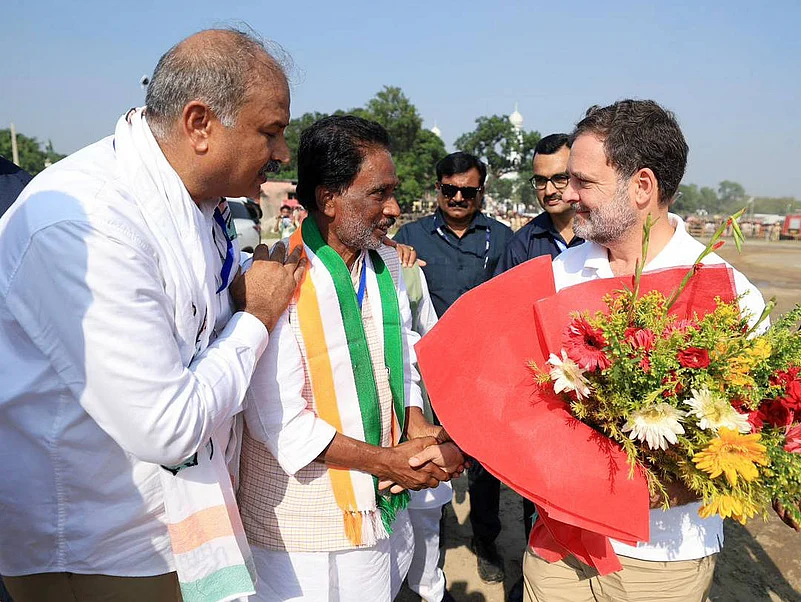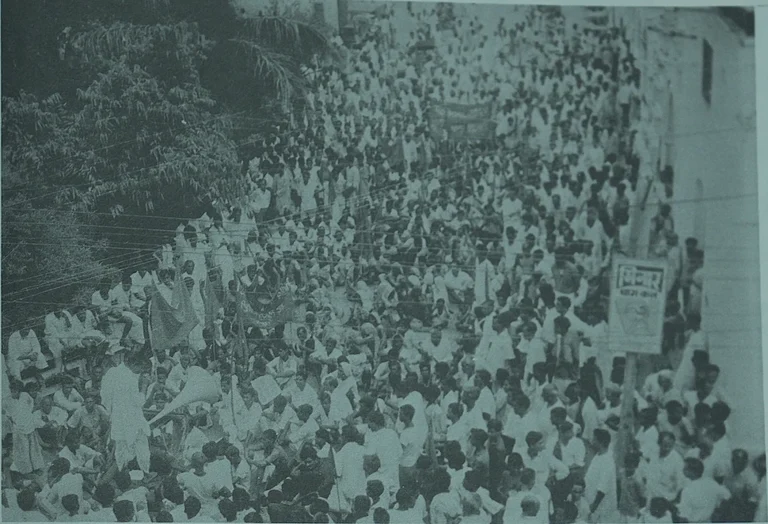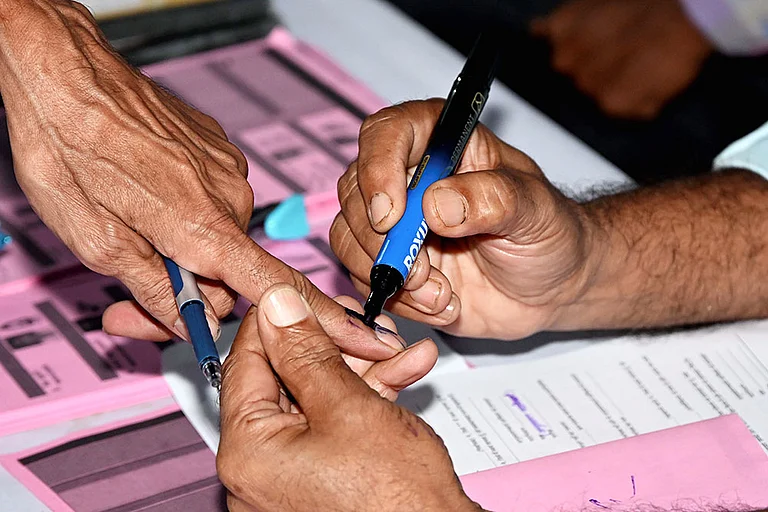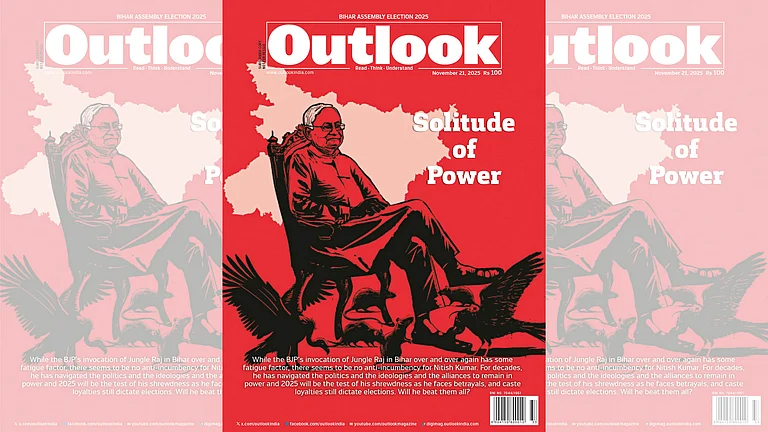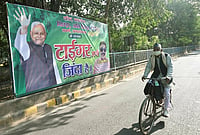
Seemanchal comprises the districts of Purnia, Katihar, Araria, and Kishanganj.
The region was historically the corridor through which trade, migration, and language flowed between North Bengal and the plains of Mithila.
Nearly half of Seemanchal’s population, in Kishanganj, is Muslim— as much as 68 per cent.
Tomorrow, as the second phase of the Bihar Assembly elections unfolds, the attention of the state, and perhaps the nation, will turn quietly yet decisively toward its far northeastern corner. This is the Seemanchal region, that crescent of land pressed between the borders of Nepal and North Bengal, folded into the eastern edge of Mithila, and often forgotten by Patna until election time arrives.
Here, the rivers change their courses each monsoon as if to remind men that geography has its own will. Here, politics flows through the silted veins of the Kosi and Mahananda, their waters carrying the stories of neglect, migration, and survival. And here, amid the chatter of election vans and the faint echo of loudspeakers, Rahul Gandhi arrived this weekend, invoking once again the twin ghosts of ‘vote theft’ and ‘neglected Bihar.’
At his rallies in Kishanganj and Purnia, the heart of Seemanchal, Gandhi’s speech was less an election address than a provocation, a dare to memory. ‘We revealed 25 lakh fake votes in Haryana,’ he thundered, ‘but neither Modi nor the Chief Election Commissioner spoke a word. They will one day be caught stealing votes.’ Then came the litany that Bihar has long grown used to hearing: corruption, unemployment, migration, the collapse of industries, and the betrayal of farmers. In another register, his words were not merely accusations; they were an invocation of a region’s exhaustion.
The Forgotten Frontier
Seemanchal, the land of the frontier, is a geographical phrase, but in Bihar’s imagination, it is more a metaphor. It stands at the edge of both geography and governance. Comprising the districts of Purnia, Katihar, Araria, and Kishanganj, Seemanchal was historically the corridor through which trade, migration, and language flowed between North Bengal and the plains of Mithila.
After Independence, when the boundaries of states were redrawn, this region was loosely tethered to Bihar, although its cultural compass leaned towards Bengal. The old zamindari estates, the tea gardens of nearby North Bengal, the Marwari trading families of Purnia and Katihar, and the Bengali-speaking Muslim cultivators of Kishanganj, all came to constitute a fabric too complex for the politics of caste and reservation alone to describe.
Yet, the area has remained perennially underdeveloped. The absence of industry is nearly total; the roads are poor, the schools are skeletal, and healthcare is almost mythical. The region lies in the shadow of the Himalayas, and each year, the monsoon descends like an ancestral curse. The Kosi, called the ‘sorrow of Bihar,’ still devours embankments, while in Araria, entire villages move with the floods as if migration were an annual ritual.
To say Seemanchal is Bihar’s poorest corner is to state an incomplete truth. Poverty here is not merely of income but of belonging. In Patna’s political arithmetic, Seemanchal’s votes are counted; its people are not remembered.
The Demography of Difference
In Bihar’s predominantly Hindu demography, Seemanchal stands apart. Nearly half of its population, in Kishanganj, as much as 68 per cent , is Muslim. The rest are Hindus of various castes and languages: Maithili speakers, Surjapuri Hindus and Muslims, Bengali settlers, and a scattering of Marwaris who arrived generations ago with the railways and stayed to build their businesses around the grain markets and silk trade.
This mix has produced a culture that feels neither wholly Bihari nor wholly Bengali. Purnia’s mornings hum with a blend of Maithili and Bangla; the azaan and the temple bell share the same time. Women’s songs carry the soft lilt of both languages, a hybrid rhythm shaped by migration and memory. The food, too, betrays this mingling: rice and fish from Bengal, mutton curry thickened in mustard oil, sweets that recall Siliguri and Malda.
In the bazaars of Katihar, one still meets Marwari shopkeepers who keep their accounts in Hindi and gossip in Bangla. “Our grandfathers came here with the East Bengal jute traders,” one said recently, “and never went back. We are Biharis, but our festivals are half Rajasthani, half Bengali.”
Across the border in Nepal, the Terai villages continue to share kinship with Seemanchal families. Weddings, funerals, and trade transcend the artificial line drawn by the Survey of India. This fluidity of belonging, part Maithili, part Bengali, part Nepali , is both Seemanchal’s heritage and its burden.
The Politics of Margins
Seemanchal’s political story has always been shaped by outsiders. For decades, it was the Congress’s quiet bastion; later, it became the testing ground for the Janata Dal and the RJD’s experiments in social justice. Lalu Prasad Yadav’s rhetoric of ‘social empowerment’ had a limited resonance here; caste hierarchies existed, but communal and linguistic identities were more decisive.
Since the 2000s, the BJP and JDU have tried to make inroads through development promises and the politics of welfare delivery. Yet, despite Nitish Kumar’s repeated claims of ‘sushasan,’ the region’s infrastructure remains skeletal. The statistics tell their own story: literacy rates hover below the state average; female literacy in Kishanganj is among the lowest in India; per capita income trails the national average by more than half.
And yet, Seemanchal is not merely a story of poverty. It is a story of assertion, of people demanding to be counted. The demand for a ‘Seemanchal Development Authority’ echoes every election cycle, even as local leaders lament that Patna’s bureaucracy treats the area as an afterthought.
Rahul Gandhi’s speech in Purnia, then, must be heard against this backdrop. When he accuses Nitish Kumar of giving land to Adani for a power project ‘for one rupee,’ he is invoking not just corruption but the long history of land and resource alienation in this belt, where large estates were broken in name, not in practice, and where industries have never taken root. ‘If land can be given for a power plant,’ he asked, ‘why not for a food processing unit in Bhagalpur, where mango orchards rot for want of infrastructure?’
It was a pointed question, though it might not change votes overnight. In Seemanchal, political anger runs deep but is diffused, divided between the yearning for development and the fear of communal polarisation.
Borderlines and Identities
The political relevance of Seemanchal lies not just in its Muslim-majority demography but in its geography of anxiety. This is the region that Delhi often associates with “infiltration” , a word that carries more menace than meaning.
When Narendra Modi or Amit Shah speak of ‘ghuspaithiye,’ they mean the porous borderlands of districts like Araria and Kishanganj. But the people here know that the borders are older than the Republic; they are lines that families cross to visit cousins or to sell jute and goats.
Rahul Gandhi, in his Sunday speech, turned this accusation back on its source. ‘If Modi and Shah have ruled for eleven years,’ he asked, ‘why are the infiltrators still here? Do they remember them only during elections?’ It was a political jab, but also a sociological truth. In Seemanchal, ‘infiltrator’ and ‘migrant’ are words that blur easily. Almost every family has someone working in Bengal, Assam, or Delhi, a son in a textile factory, a daughter teaching in Siliguri. Migration is the region’s oldest industry.
It is not only Muslims who move. Hindus from Purnia’s rural belt also travel to the Terai or Siliguri for work. Economic desperation has long made identity porous. Seemanchal’s composite culture survives not because of political benevolence but despite it.
The Economy of Exile
A walk through Purnia town tells the story. The old markets, Gulabbagh and Khuskibagh, are still lined with Marwari traders selling tiles, paint, and grain, their signboards dusty but resilient. The mosques and temples stand shoulder-to-shoulder. In the evenings, rickshaw pullers carry passengers through the narrow lanes where Bangla songs spill from one shop and Maithili bhajans from the next.
What you do not see are factories. What you hear are remittance stories. Every household has a man in Delhi, Mumbai, or the Gulf. The money orders and digital transfers that arrive each month are what sustain this landscape.
Nitish Kumar’s promise of transforming Bihar into an industrial state bypassed Seemanchal almost entirely. There are no food parks, no agro-processing hubs, no sugar mills revived from their ruins. ‘Our mangoes travel to Kolkata in trucks, but we buy packaged juice made there,’ said a farmer near Dagarua. ‘Why not make it here?’
This is the voice Rahul Gandhi tried to echo , of a people who see development not as ideology but as a simple matter of fairness.
The Pulse Before the Poll
As polling day dawns, Seemanchal stands at its usual crossroad. In 2015, this region had tilted toward the Grand Alliance, giving RJD and Congress their crucial margins. In 2020, it showed mixed loyalties. This year, the INDIA bloc hopes to consolidate Muslim votes while hoping that economic frustration cuts into Nitish’s legacy.
But the region is not easily predictable. The local equations , between Surjapuri Muslims, Maithili Hindus, and Marwari traders, can shift rapidly. Communal harmony remains fragile, yet remarkably resilient. Even during nationwide polarisations, Kishanganj’s bylanes have rarely erupted. The social etiquette of coexistence, born of centuries of shared trade and festivals, holds.
In the end, Seemanchal votes with a kind of weary hope. Its people have learned to expect less from Patna and Delhi, and more from their own tenacity.
The Culture That Endures
For all its deprivation, Seemanchal remains one of Bihar’s most culturally alive regions. Folk songs in Surjapuri and Maithili, Bangla recitations, the Eid and Durga Puja processions that pass each other with courtesy, these are not exceptions but the grammar of everyday life.
In Kishanganj’s madrasas, Urdu poetry thrives; in Purnia’s schools, Maithili and Hindi share the same classroom. The Marwari families sponsor Saraswati Puja pandals that their Muslim employees visit without hesitation. Such gestures rarely make it to campaign speeches, yet they form the quiet architecture of belonging.
The proximity to North Bengal has infused Seemanchal with literary and culinary traces. Bengali magazines circulate alongside Hindi weeklies; tea from Siliguri’s foothills arrives fresh each morning. The long border with Nepal ensures that Mithila’s rituals and dialects extend seamlessly beyond nationality.
This porousness, cultural, linguistic, and emotional, is the real identity of Seemanchal. And it is precisely what makes the rhetoric of ‘outsiders’ and ‘infiltrators’ so hollow. The people here have never lived by the map; they have lived by the rhythm of the rivers.
The Closing Note
As the sun rises over the floodplains tomorrow, voters will line up at schools that double as polling booths. The young will check their names anxiously on the lists; the old will recall the last time the embankment broke. Somewhere, a loudspeaker will play Rahul Gandhi’s voice warning against ‘vote theft.’ Somewhere else, a JDU worker will promise better roads.
But the real election here is between despair and endurance. Between a politics that sees Seemanchal as a vote bank and a society that insists on being seen as a whole people.
In the end, perhaps Seemanchal will vote the way it always has, cautiously, communally aware, and driven less by ideology than by survival. What remains unseen is the dignity with which it continues to live on the margins of a republic that seldom visits except in election season.
The rivers will rise again next year. The roads will erode. The young will migrate. And in some small bazaar of Purnia or Kishanganj, a trader will still say, half in Bangla, half in Hindi, ‘Ei desh amader o, humra ke bhi hai’, this land belongs to us too.
That, more than any slogan or manifesto, is Seemanchal’s quiet declaration of existence.
Views expressed here are the author’s own
(Ashutosh Kumar Thakur writes regularly on society, literature, and the arts, reflecting on the shared histories and cultures of South Asia. )






